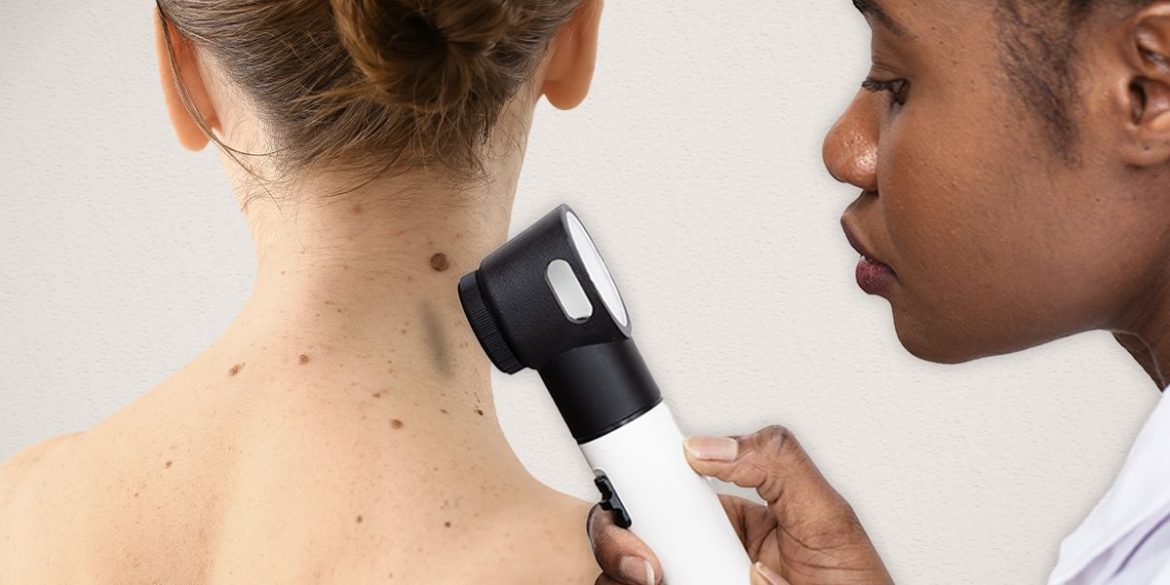It’s estimated that 3.6 million people are diagnosed with basal cell carcinoma (BCC) every year in the United States. By far, it’s the most common skin cancer there is, and thankfully, it’s the least deadly. If you catch it early enough, that is. By now, we all know that excessive sun exposure can cause cancer, but there’s more to preventing, diagnosing, and treating BCC than is common knowledge.
What Is Basal Cell Carcinoma?
Basal Cell Carcinoma is a type of non-melanoma skin cancer. BCC occurs when a basal skin cell (a normal cell in the skin) begins to grow abnormally and multiples very quickly. BCC is not only the most commonly occurring skin cancer in humans but is the most commonly occurring cancer overall. It affects almost 1 in 5 Americans. After having one BCC, the risk for developing another BCC is even higher. Because it’s so common and the risk of getting it again increases, it’s vital to have regular skin checks.
What Does Basal Cell Carcinoma Look Like?
There are a few different types of BCC but the most common types are nodular BCC and superficial BCC. A nodular BCC is a skin-colored or pink bump that sometimes has an open sore in the center, while a superficial BCC is a shiny pink spot that is usually slightly raised up.
Where Does Basal Cell Carcinoma Show Up On The Body?
Basal cell carcinoma usually shows up in sun exposed areas like the face, especially the nose, scalp, neck, and ears. However, it can still develop in other areas. So don’t limit your skin checks to sun-exposed areas of the body only.
How Is It Diagnosed?
Basal cell carcinoma is diagnosed by a skin biopsy. If a dermatology provider suspects you may have BCC, we will numb the area and take a piece of the skin. The sample is then sent to our lab and examined under the microscope by a doctor called a pathologist. Here, the skin cells are evaluated for common signs of basal cell carcinoma.
How Is It Treated?
Basal cell carcinoma can be treated several ways depending on where it is located, how big the BCC is, and what type of BCC it is. Typically, BCC is treated by a Mohs procedure. This is when a surgeon numbs the skin and takes pieces of the skin to look at under a microscope. The surgeon will check the skin while you are in the office and take additional layers of skin until all of the BCC is gone. Stitches may be used to close the skin from where the BCC was removed. This is the most successful way to ensure the entirety of the cancer is removed from the area.
BCC will continue to grow if left untreated. This type of skin cancer will not regress or ‘go away’ on its own. Although this skin cancer almost never metastasizes (spread to other areas of the body), it will destroy the surrounding skin and nerves. More aggressive types of BCC can destroy bone and muscle, but this is less common.
What Causes Basal Cell Carcinoma?
Basal cell carcinoma is typically caused by UV exposure (sun exposure). BCC is most commonly developed in patients who have a history of intense sun burns opposed to chronic sun exposure. People with fair skin, light hair, and light eyes are more likely to develop BCC.
While it may be the most common form of skin cancer, it’s also the most treatable. That doesn’t mean you shouldn’t take the necessary steps to prevent it and increase your chances of early detection with regular skin checks. Click here to schedule your same day skin check appointment today!
For more skin care information, visit our blog:



